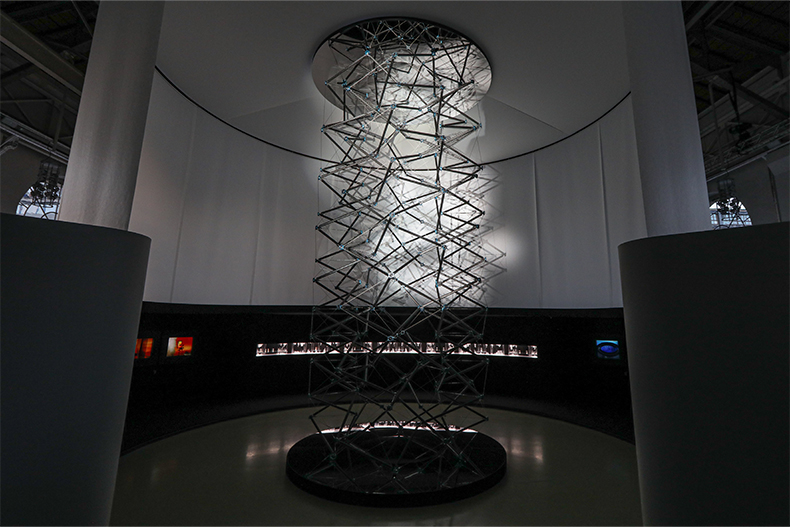Landolf Rhode-Barbarigos, a newly promoted associate professor in the Department of Civil & Architectural Engineering, has won a National Science Foundation (NSF) Faculty Early Career Development (CAREER) Award for his work in tensegrity structure research and education.
“The concept comes from art,” Rhode-Barbarigos said of tensegrity structures. “It started from Kenneth Snelson’s sculptures and has attracted a long line of scientists, architects, and engineers.
“However, it has not been properly researched as an engineering principle,” Rhode-Barbarigos added. “That’s the crucial work this NSF CAREER Award supports: deciphering the structural behavior of tensegrity structures, and through that deeper understanding, trying to design and optimize their usage within civil engineering applications.”
So, what’s a tensegrity structure?
“In simple words, tensegrity structures are a stable assembly of sticks and strings. You’ll find different definitions in other fields, but essentially these structures that often look very geometric but sometimes also extremely chaotic follow very specific mathematical relationships.”

Why these structures are so important
Rhode-Barbarigos completed his Ph.D. on the design, analysis, and experimentation of an active tensegrity structure for a deployable footbridge. As a student, he was drawn to the peculiar appearance of these structures. This NSF CAREER Award will allow him to investigate the mechanical behavior of tensegrity structures generally as well as pioneer new structures for civil engineering applications through the study of their morphology.
These aesthetically intriguing, minimal structures may prove to be more sustainable than traditional structures as well. “Tensegrity allows for structures of reduced mass exploring tension and compression only, optimizing the use of materials in their construction. But engineers often find them challenging because you need the right configuration of sticks and strings to build a usable structure.
“They’re not the answer to everything, but I argue that they’ve been under-investigated,” Rhode-Barbarigos said. “Fundamentally, the concept is the same across fields, applications, scales, and materials – from explaining cellular behavior to imagining smart structures, planetary landers, and habitats. It’s exciting that there's now this support for investigating this unique concept.”
Object-based learning to ignite interest in engineering
This NSF CAREER Award will also have an important impact on education exploring tensegrity as a STEAM concept for the development of new learning material for students as well as in broader educational outreach activities in collaboration with the Museum of Contemporary Art (MOCA) North Miami. Collaborating with MOCA provides a platform for direct interaction with K-12 students and the general public. In these activities Rhode-Barbarigos will engage with students and Diana Arboleda, senior lecturer in the Department of Civil & Architectural Engineering and faculty advisor of the UMaker student organization, an organization that aims to provide students with a safe and inclusive space to create, invent, and learn. He will also work with Renee Evans, Senior Design Instructor from the UM Learning Innovation and Faculty Engagement (LIFE) program and an evaluator from Rockman et al. to ensure the successful implementation and assessment of the different educational activities.
“For a couple of years now, we’ve had STEAM workshops on tensegrity at MOCA,” Rhode-Barbarigos said. “We provide object-based learning to their miniMakers, which my daughter was a part of, as well as their Teen Art Force. Students are drawn to the strange appearance of tensegrity structures. They’re great STEAM objects – you really have science, technology, engineering, art, and mathematics in the same object with our goal always being to inspire, inform, excite, and educate.”


